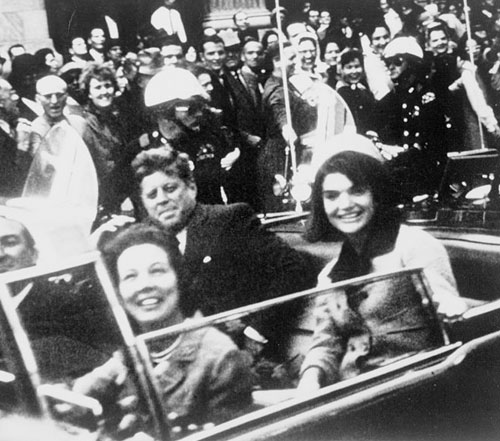Thursday September 12, 2013
The Most Horrible Thing I've Ever Heard
Lately I’ve been reading “Popular Crime: Reflections on the celebration of violence,” by Bill James. Yes, that Bill James. Along with baseball stats, he’s apparently got a bit of a crime-story fixation. He considers himself an amateur sleuth. He has a few corrections in mind for the justice system.
In the book, he goes over some of the more famous murder cases in American history (Lizzie Bordon, Lindbergh Baby, O.J.), some sensational cases in their day that have receded from view (Elizabeth Canning, Mary Rogers, Hall-Mills), and he has a chapter on serial killers that will make you want to flee the planet.
He also talks about the most famous American murder of the 20th century: John F. Kennedy. And it’s there that I read one of the most horrible things I’ve ever read.
James begins many of his discussions by saying, basically, I’m just some guy; what the hell do I know? Then he tells you what the hell he knows. This is particularly true here. He says there are a zillion books on the JFK assassination—that you can read one a month for 20 years and not be done—but he can recommend two: Gerald Posner’s “Case Closed” and Bonar Menninger’s “Mortal Error.” I was familiar with the first (Oswald did it, by himself, get over it) but not the second, and that’s the one he really recommends.  It’s based on the work of Baltimore ballistics expert Howard Donahue. In 1967, CBS News was attempting to recreate what Oswald had done to see that it could be done—to see if someone could hit a target at that distance with that gun three times in 5.6 seconds. So they hired Donahue. Who did it in 5.2 seconds. Case closed.
It’s based on the work of Baltimore ballistics expert Howard Donahue. In 1967, CBS News was attempting to recreate what Oswald had done to see that it could be done—to see if someone could hit a target at that distance with that gun three times in 5.6 seconds. So they hired Donahue. Who did it in 5.2 seconds. Case closed.
Except Donahue became fascinated with the assassination and did his own research and came to his own conclusions.
Three shots were fired that day at Dealey Plaza. This is what Donahue believes happened.
He believes Oswald fired the first two shots. The first missed, but a ricocheted fragment hit the President in the neck. The second shot hit both Kennedy and Connally. Then Oswald’s gun jammed and he never got off a third shot.
So what happened? Who fired the third shot? Was it David Ferrie in the grassy knoll with the candlestick?
Here’s why Donahue believes Oswald didn’t fire the third shot:
- The third bullet disintegrated upon impact, which a bullet from Oswald’s Carcano rifle would not have.
- A Carcano round fired at that distance—from Oswald to Kennedy—would not have had the impact the third bullet that hit Kennedy did.
- A Carcano round is 6.5 millimeters in diameter. The final, fatal entrance wound was 6 mm wide.
- The trajectory of the final bullet, based upon entrance and exit wounds as well as the position of the President’s head at the time, traces back, not to the book depository, but to the car directly behind Kennedy.
And who was in the car directly behind Kennedy? The Secret Service.
No, the Secret Service wasn’t in league with LBJ and Castro and the Mafia to bring down Kennedy. In some ways, it’s worse:
... a Secret Service man, George Hickey, grabbed a weapon when he heard the first shot. Hickey’s weapon accidentally fired, and that bullet, from Hickey’s gun, mortally wounded the President.
Hickey’s gun, an AR-15, uses bullets 5.56 mm in diameter, which disintegrate upon impact. Hickey was also close enough to the President to account for the big blam of the third shot.
An accident. A fucking accident. That’s how our history changed.
The night I read this I went numb with horror.
I should add that I, like James, don’t know anything, but I really don’t know anything. I don’t know ballistics and trajectories and yadda yaddas. I haven’t studied any of it.
But I know what makes sense. Here’s James:
On first hearing this theory, almost no one believes that it could be right. ... But I have read Mortal Error carefully, and I have to tell you, if there’s a flaw in his argument I don’t see it. Unlike the conspiracy theories, which are almost universally based on some conversations which tooks place in Russia in 1961, in New Orleans in 1962, or in Tampa in 1972, the Donahue analysis is based primarily upon a detailed, careful study of what happened in Dealey Plaza on November 22.
I still don’t know if it’s true or not. Most people think it isn’t. But of all the conspiracy theories out there, this is the one that fits my worldview. To plot out, and organize, and initiate, a murder of this size and scope, and then disappear from view? Poof? We’re just not that smart.
But a mistake? A screw-up? A horrible, horrible accident? Oh yeah. That’s us. That’s us all over.

Baseball's Active Leaders, 2023
What Trump Said When About COVID
Recent Reviews
Everything Everywhere All at Once (2022)
Black Panther: Wakanda Forever (2022)
Doctor Strange in the Multiverse of Madness (2022)
Spider-Man: No Way Home (2021)
The Cagneys
A Midsummer Night's Dream (1935)
Something to Sing About (1937)
Angels with Dirty Faces (1938)
A Lion Is In the Streets (1953)
Man of a Thousand Faces (1957)
Never Steal Anything Small (1959)
Shake Hands With the Devil (1959)







